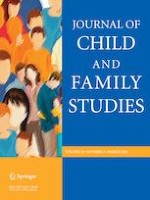17-01-2023 | Original Paper
Children’s Problematic Use of the Internet in Biological and Social Context: A One-Year Longitudinal Study
Gepubliceerd in: Journal of Child and Family Studies | Uitgave 3/2024
Log in om toegang te krijgenAbstract
Contemporary psychological theories point to the value of considering both biological and environmental factors in understanding child behavior, including the child’s interactions with modern day digital technology. We adopted a bioecological perspective and examined the child’s level of hyperactivity/inattention (ADHD) symptoms, general parenting practices and Internet-related parenting practices in relation to the child’s problematic use of the Internet (PUI). Parent-child dyads of 691 school-aged children (8–10 years old at the first measurement time) from Latvia (n = 236), Lithuania (n = 207) and Taiwan (n = 248) completed questionnaires at two time points with a one-year interval. Children reported on their Internet use and parental restrictions, as did the child’s parents. The parents also reported on the child’s level of ADHD symptoms, as well as their general and Internet-related parenting practices. Upon adjusting for child’s age, gender, smartphone ownership and country, ADHD symptoms at Time 1 were positive predictors of PUI at Time 2, whereas Time 1 warm parenting and child-reported Internet use rules at home were negative predictors of PUI at Time 2. Cross-lagged analysis of PUI, ADHD symptoms, warm parenting and child-reported rules indicated cross-lagged bidirectional longitudinal associations. Implications for PUI preventive measures are discussed.
